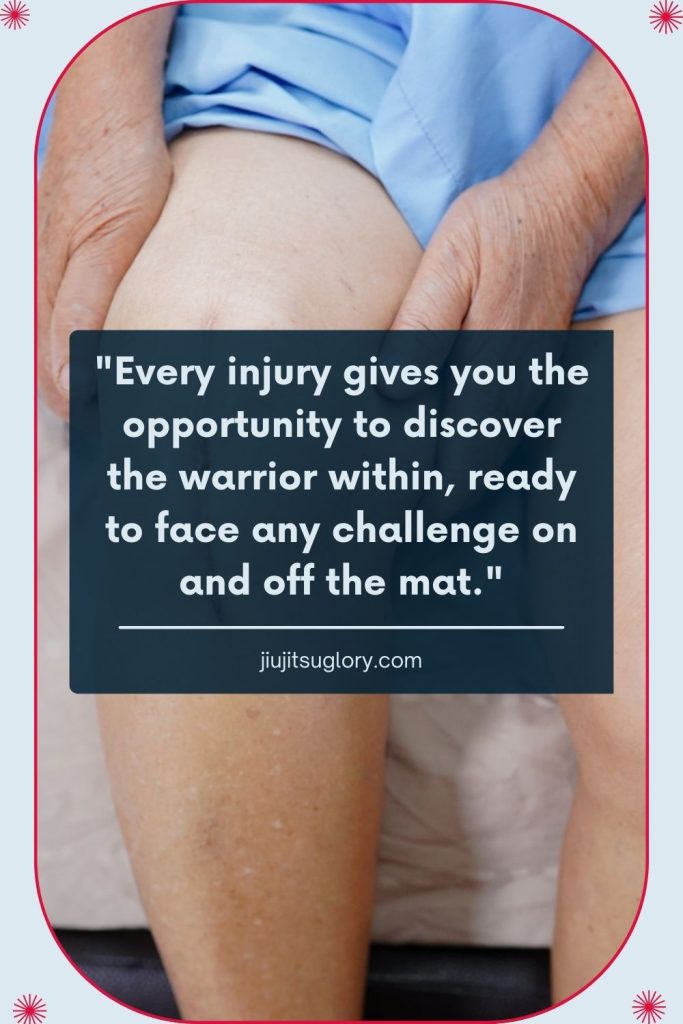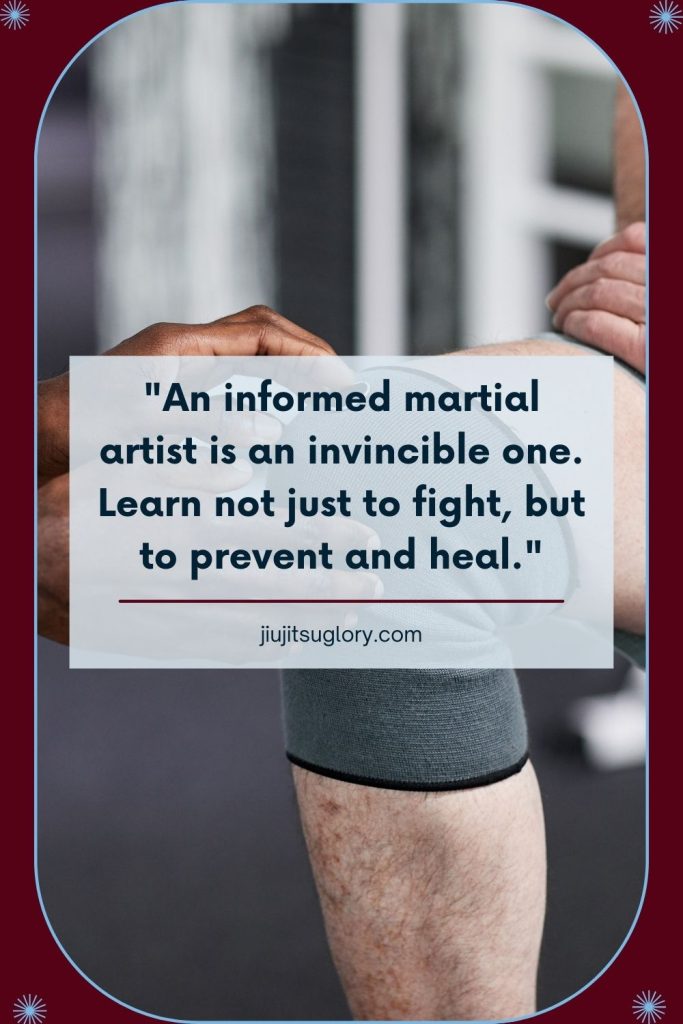Proper recovery from jiu-jitsu knee injuries is crucial for returning to the mat and preventing long-term damage.
This guide outlines essential steps and best practices for effectively recovering from knee injuries specific to Jiu-Jitsu.
- Understanding Knee Injuries in Jiu-Jitsu
- Best Practices for Recovering from Jiu-Jitsu Knee Injuries
- Immediate Response to Injury
- Professional Diagnosis and Treatment
- Adhere to a Structured Rehabilitation Protocol
- Educate Yourself About Knee Injury Prevention
- Engage in Controlled Physical Activities
- Utilize Proper Support Equipment
- Modify Your Training Techniques
- Gradual Return to Jiu-Jitsu Training
- Knee Strengthening
- Listen to Your Body
- Schedule Regular Medical Follow-ups
- Conclusion
Understanding Knee Injuries in Jiu-Jitsu

In Jiu-Jitsu, knee injuries like ligament tears and meniscus injuries are common.
This is due to the twisting, turning, and direct impacts typical in grappling.
Recognizing the type of knee injury is crucial as it determines the appropriate treatment and recovery plan.
Being informed helps you communicate more effectively with healthcare providers, ensuring a focused approach to healing.
Best Practices for Recovering from Jiu-Jitsu Knee Injuries

Recovering from a knee injury sustained during Jiu-Jitsu requires a careful and well-thought-out approach to ensure complete healing and prevent future issues.
Here are some best practices to follow:
Immediate Response to Injury
Immediate action is vital after a knee injury.
Cease training to prevent further harm.
Apply the RICE method—Rest, Ice, Compression, Elevation—as soon as possible.
These initial steps can significantly alleviate pain and swelling.
Otherwise, consulting a doctor is crucial if the injury seems severe or you experience knee instability.
Professional Diagnosis and Treatment
A professional diagnosis is essential to understand the full extent of your injury.
An orthopedist or sports medicine specialist can offer the most appropriate treatments, from conservative management with physical therapy to surgical intervention.
Adhering strictly to the prescribed treatment plan will optimize recovery.
Adhere to a Structured Rehabilitation Protocol
Work closely with your physical therapist to follow a rehabilitation program tailored to your knee injury.
This plan should include a variety of exercises designed to gradually increase the strength and flexibility of your knee without overstressing it.
Educate Yourself About Knee Injury Prevention

Understanding the mechanics of knee function and common injury mechanisms is vital for recovery.
This can empower you to make informed decisions about your activities and training routines.
Knowledge is a critical component of injury prevention.
Engage in Controlled Physical Activities
Incorporate low-impact activities such as swimming or cycling into your recovery process.
These activities help maintain overall fitness and facilitate knee strength without placing excessive strain on your injury.
Utilize Proper Support Equipment
Invest in a high-quality knee brace as recommended by your orthopedist.
The right brace can support your knee during physical activity, reducing re-injury risk.
Modify Your Training Techniques
As you return to Jiu-Jitsu, be mindful of the techniques that stress your knee significantly.
Work with your coaches to modify these techniques or adopt new ones safer for your knee condition.
Gradual Return to Jiu-Jitsu Training

Ease back into training with light, non-stressful drills. Avoid intense sparring until your knee is strong enough to handle significant stress.
Gradually increase the intensity of your training based on comfort and absence of pain, always heeding your body’s feedback.
Knee Strengthening
Besides specific knee strengthening exercises, focus on overall body conditioning.
More muscular body mechanics and muscle support reduce the burden on your knee, thereby decreasing the likelihood of future injuries.
Listen to Your Body

Pay close attention to your body’s signals and avoid pushing through pain.
Pain indicates something might be wrong, so adjusting your activity level based on pain and discomfort is vital to a safe recovery.
Schedule Regular Medical Follow-ups
Regular appointments with your healthcare provider are crucial.
These check-ups help monitor your progress and make necessary adjustments to your treatment plan, ensuring your recovery stays on track.
See also: 5 Top Knee Braces for Jiu-Jitsu You Should Consider
Conclusion
Recovering from a knee injury in Jiu-Jitsu demands patience, diligent adherence to medical advice, and a commitment to a carefully structured rehabilitation plan.
It’s essential to approach your recovery as a gradual process that builds strength and flexibility without risking further injury.
By staying informed, listening to your body, and working closely with healthcare professionals, you can ensure a recovery that brings you back to the mat and enhances your overall resilience and performance.
See also: 8 Essential Jiu-Jitsu Hygiene Practices for Beginners


